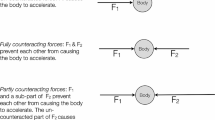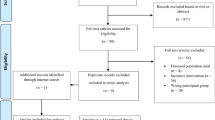Summary
This study investigated the influence of object weight and instructions on grip force responses in humans. Using a precision grip, subjects lifted a small instrumented test object to a predetermined height. Prior to each set of 40 trials, subjects were verbally instructed to either “hold” or “let go” of the object in response to any change in weight. Unpredictably on some trials (< 20%), a sudden sustained increase (load) or decrease (unload) in vertical load was applied to the object. Grip responses to these induced weight changes were evaluated by measuring grip force, object position, and associated electromyographic (EMG) activity. Grip force changes for a load were over three times greater than those for an unload. Such asymmetry may reflect everyday grasp and manipulation in a gravity-influenced world. Grip force adjustments to loads following “hold” instructions were on the average somewhat larger than those following “let go” instructions, but there was no influence of instructions on responses to unloads. These findings contrast with more robust influences of verbal instruction on automatic postural and proximal upper limb responses and also may suggest that grip force adjustments are influenced to a greater extent by intrinsic task variables than by extrinsic volitional intent. Such organization appears tailored to functional task requirements in natural environmental contexts.
Similar content being viewed by others
References
Abbs JH, Winstein CJ (1990) Functional contributions of rapid and automatic sensory-based adjustments to motor output. In: Jeannerod M (ed) Attention and Performance XIII. Lawrence Erlbaum Associates, London, pp 627–652
BMDP (1988) BMDP statistical software, program 4V. Regents of University of California, Los Angeles
Buchholz B, Frederick LJ, Armstrong TJ (1988) An investigation of human palmar skin friction and the effects of materials, pinch force and moisture. Ergonomics 31:317–325
Chernikoff R, Taylor FV (1952) Reaction time to kinesthetic stimulation resulting from sudden arm displacement. J Exp Psychol 43:1–8
Cole KJ, Abbs JH (1987) Kinematic and electromyographic responses to perturbation of a rapid grasp. J Neurophysiol 57:1498–1510
Cole KJ, Abbs JH (1988) Grip force adjustments evoked by load force perturbations of a grasped object. J Neurophysiol 60:1513–1522
Crago PE, Houk JC, Hasan Z (1976) Regulatory actions of the human stretch reflex. J Neurophysiol 39:925–935
Gibson JJ (1962) Observations on active touch. Psych Rev 69:477–491
Hammond PH (1956) The influence of prior instructions to the subject on an apparently involuntary neuro-muscular response. J Physiol Lond 132:17P-18P
Johansson RS, Westling G (1984) Roles of glabrous skin receptors and sensorimotor memory in automatic control of precision grip when lifting rougher or more slippery objects. Exp Brain Res 56:550–564
Johansson RS, Westling G (1987) Signals in tactile afferents from the fingers eliciting adaptive motor responses during precision grip. Exp Brain Res 66:141–154
Johansson RS, Westling G (1988a) Coordinated isometric muscle commands adequately and erroneously programmed for the weight during lifting task with precision grip. Exp Brain Res 71:59–71
Johansson RS, Westling G (1988b) Programmed and reflex actions to rapid load changes during precision grip. Exp Brain Res 71:72–86
Lemon RN, Mantel GW, Rea PA (1990) Recording and identification of single motor units in the free-to-move primate hand. Exp Brain Res 81:95–106
Long C II, Conrad PW, Hall EA, Fuller SL (1970) Intrinsic-extrinsic muscle control of the hand in power grip and precision handling, an electromyographic study. J Bone Joint Surg 52A:853–867
Marsden CD, Merton PA, Morton HB (1981) Human postural responses. Brain 104:513–534
Motomura N, Yamadori A, Asaba H, Sakai T, Sawada T (1990) Failure to manipulate objects secondary to active touch disturbance. Cortex 26:473–477
Rosenbaum DA, Vaughan J, Barnes HJ, Marchak F, Slotta J (1990) Constraints on action selection: overhand versus underhand grips. In: Jeannerod M (ed) Attention and performance XIII. Lawrence Erlbaum Associates, London, pp 321–342
Traub MM, Rothwell JC, Marsden CD (1980) A grab reflex in the human hand. Brain 103:869–884
Westling GK (1986) Sensori-motor mechanisms during precision grip in man. Umeå University Medical Dissertations, Umeå
Westling G, Johansson RS (1984) Factors influencing the force control during precision grip. Exp Brain Res 53:277–284
Westling G, Johansson RS (1987) Responses in glabrous skin mechanoreceptors during precision grip in humans. Exp Brain Res 66:128–140
Winstein CJ (1989) Anticipatory and task-specific sensorimotor processing in the control of human grasp. Satellite Conference: System Solutions to Motor Control Problems. Tempe, AZ, October, 1989
Author information
Authors and Affiliations
Rights and permissions
About this article
Cite this article
Winstein, C.J., Abbs, J.H. & Petashnick, D. Influences of object weight and instruction on grip force adjustments. Exp Brain Res 87, 465–469 (1991). https://doi.org/10.1007/BF00231864
Received:
Accepted:
Issue Date:
DOI: https://doi.org/10.1007/BF00231864




